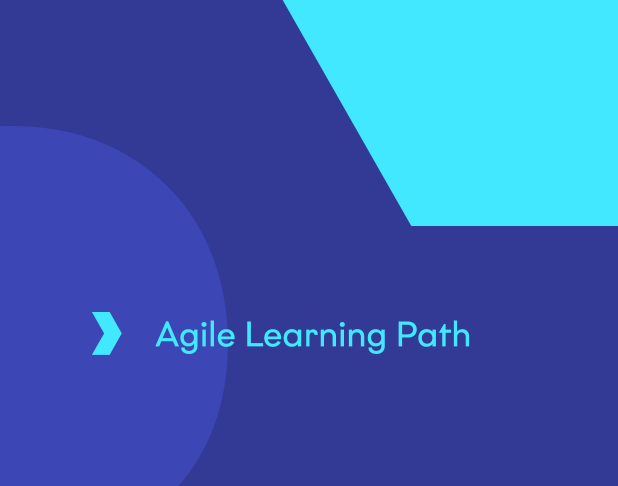Develop a holistic approach to Agile project management with our Agile Learning Path. Learn how to lead teams and foster a collaborative work environment, deliver projects that align with stakeholder expectations, predict and prevent project failures, and more.
15% off eLearning, up to 20% off virtual courses - use code: EARLY1225UAE
Agile Learning Path
Select your learning method
AgilePM® Foundation
Scrum Master
Scrum Product Owner
AgileBA® Foundation

Become an Agile expert with our learning path
The Agile Learning Path is a comprehensive selection of four courses designed to build expertise in Agile and Scrum approaches for project management and business analysis. Throughout the course of this learning path, you will gain four certifications and develop your understanding of Agile principles.
- The underpinning philosophy and principles of Agile and how to apply them in a project situation
- The lifecycle of an Agile project, and the roles and responsibilities of various team members
- How to apply techniques such as MoSCoW prioritisation, timeboxing, modelling, and iterative development
- Learn how agility helps navigate VUCA challenges
- Understand the Scrum framework and how it can be adopted within an organisation
- Understand how Scrum integrates with Agile project management
- Understand the concepts, roles, events and artefacts in Scrum
- The products created during an Agile project and their uses
- How to plan and manage an iteration
- Be able to analyse business goals and their decomposition
What you'll learn
Master the fundamentals of Agile project management, Scrum, and business analysis with our Agile Learning Path. The comprehensive programme provides the tools needed to deliver high-value projects with confidence in Agile environments.
Agile project management
Develop expertise in managing Agile project lifecycles, be able to define clear team roles and responsibilities, and discover how to prioritise tasks using techniques like MoSCoW. Mastering these skills will prepare you to lead Agile projects efficiently, adapting processes to meet unique project needs and delivering value to stakeholders.
Exam details:
- AgilePM Foundation – closed book multiple choice exam, with 50 questions in 40 minutes and a 60% pass mark
Scrum
Gain the practical skills needed to succeed as a Scrum professional. Learn how to facilitate effective Scrum events, manage product backlogs, help development teams self-organise and deliver high-value products. You will also be taught how Scrum theory and practices integrate with Agile project management. Throughout the learning path, you will build your knowledge of Scrum, enabling you to drive collaborative, productive, and incremental product development.
Exam details:
- Scrum Master – closed book multiple choice exam, with 50 questions in 40 minutes and a 74% pass mark
- Scrum Product Owner – closed book multiple choice exam, with 50 questions in 40 minutes and a 74% pass mark
Agile business analysis
Learn how to analyse business goals, manage requirements dynamically, and create product backlogs that prioritise customer value. The skills you build on this learning path will enable you to collaborate effectively with stakeholders, ensuring Agile principles guide business analysis and decision-making for impactful project outcomes.
Exam details:
- AgileBA Foundation – closed book multiple choice exam, with 50 questions in 40 minutes and a 50% pass mark
- 12 months access to our accredited eLearning for all four courses
- The cost of exams for AgilePM Foundation, Scrum Master, Scrum Product Owner and AgileBA Foundation
- Full tutor support
- Exam simulators for all courses
Key facts
AgilePM Foundation, Scrum Master, Scrum Product Owner, AgileBA Foundation
Project Managers, Business Analysts, Product Managers/Owners, Agile Coaches and Software Developers
There are no formal prerequisites before starting the Agile Learning Path.
Exam details will differ for each individual course, please reference the ‘What you’ll learn’ section for specific details.
Hardcopy of official AgilePM manual, hardcopy of official AgileBA manual
There is no pre-course work for this training course
FAQs
Build your Agile project management expertise with this comprehensive learning path, complete with four accredited Agile certifications - AgilePM Foundation, Scrum Master, Scrum Product Owner and AgileBA Foundation.
What is Agile?
Agile is a project management approach that emphasises flexibility, collaboration and customer-focused delivery. Unlike traditional or waterfall methods that follow a linear process, Agile uses iterative cycles called ‘sprints’ to continuously deliver smaller parts of the project at regular intervals.
How long does it take to complete the entire Agile Learning Path?
When all five courses are combined the eLearning material is expected to take 58 hours to complete, this is split as follows:
- AgilePM Foundation – 24 hours
- Scrum Master – 12 hours
- Scrum Product Owner – 10 hours
- AgileBA Foundation – 14 hours
You will be able to access the course materials for 12 months from purchase date.
What study options are available for the Agile Learning Path?
Our Agile Learning Path is available as self-paced eLearning.
Are exam fees included in the course cost?
Yes, exam fees for each certification are included. Our exam vouchers are valid for 12 months from your purchase date. Exams must be taken online via remote proctor, find out how to book your exam.

"Excellent material distilled to make it easy to absorb pieces of information."

Join the half a million learners developing their skills with our training
A trusted partner to thousands of organisations worldwide
Our passionate team goes above and beyond to support customer needs
Please complete the form to ensure your quote is accurate and we will contact you soon.